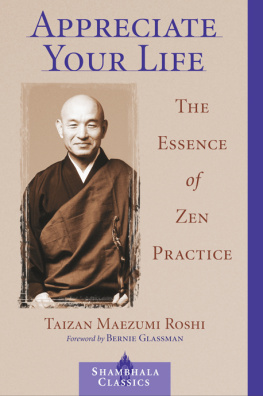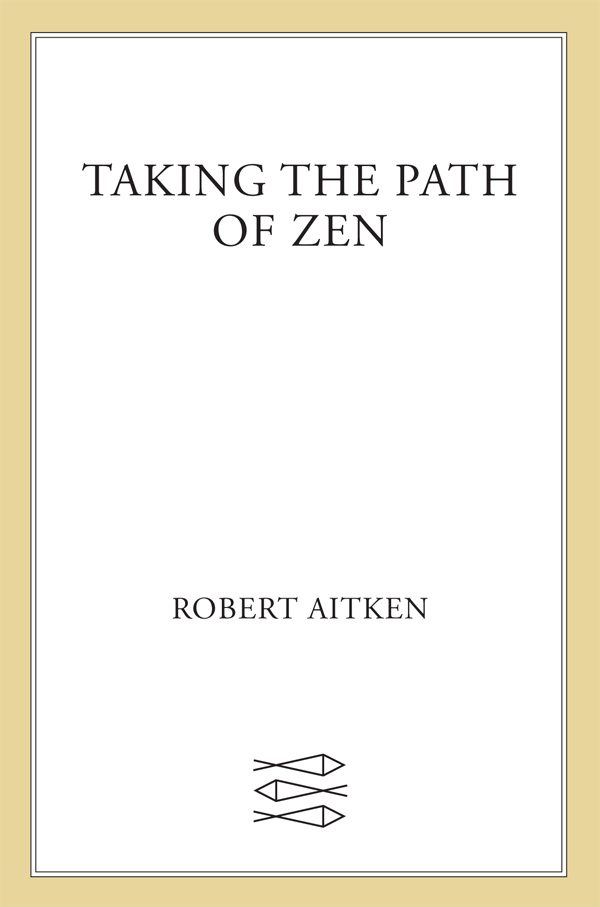Contents
Guide

The author and publisher have provided this e-book to you for your personal use only. You may not make this e-book publicly available in any way. Copyright infringement is against the law. If you believe the copy of this e-book you are reading infringes on the authors copyright, please notify the publisher at: us.macmillanusa.com/piracy.
To the memory and to the presence of
Yasutani Hakuun-shitsu Rdaishi
My purpose in this book is to provide a manual that may be used, chapter by chapter, as a program of instruction over the first few weeks of Zen training. I hope it will also serve as a reference for advanced students.
Orientation for new students of Zen is not traditional in Japan. When I attended my first Zen retreat, at Engaku Monastery in Kitakamakura, I was given no more than five minutes of instruction about how to sit and how to count my breaths before I was led into the meditation hall and shown my place. From then on it was up to me to follow the others and learn by doing. Many Zen students can relate similar experiences.
It was Harada Daiun Rshi, an innovative teacher in the early part of this century, who established orientation for monks, nuns, and lay students at his monastery, and his successors have found that students who begin in this way can avoid needless trial and error in the early months, even the early years, of their practice.
Introductory talks by Yasutani Hakuun Roshi, Harada Roshis successor, are translated in Philip Kapleaus The Three Pillars of Zen. Yamada Kun Roshi, Yasutani Roshis successor, and third in leadership of this independent stream of Zen, is my own direct inspiration and personal guide.
In Harada Roshis introductory talks, he stressed the importance of listening. If you listen as a member of an audience, you may tend to listen passively, as though I were simply expressing an opinion, not necessarily for you. This is not the act of pure listening. It is important to listen as though I were speaking to you alone.
It is the same with reading. These words are your words. They form in your mind as they appear on the page. Go with the words and you will find yourself in a natural process of acceptance and rejection that does not involve conceptual judgement.
I first prepared these talks in 1972, and they have been the core of orientation programs at our Diamond Sangha centers ever since. Down through the years, leaders and participants in these programs have offered many suggestions for revision and the book has been completely rewritten several times. I am only nominally the author now; there really should be many more names on the title page, particularly John Tarrant, and also Anne Aitken, Stephen Mitchell, P. Nelson Foster, Gary Snyder, and Yamada Roshi himself.
I am grateful to Andrew Thomas for his drawings of the zazen and stretching positions, to Francis Haar for photography work used in making the drawings, to Giza Juho Braun, Myphon Shoen Hunt, and Joseph B. Liggett for their typing, and to Jutta Hahne, Linda Engleberg, Michelle Hill, and Joseph B. Liggett for helping out in important ways. Thanks to Wendell Berry for pointing out passages in the manuscript that would not be clear to someone unfamiliar with Eastern religion, and for sticking a pin in some of my inflated figures of speech.
The photograph of kyamuni meditating in a chair is reproduced with permission of the Honolulu Academy of Arts. This seventh-century Chinese stone figure was a gift to the Academy by Robert Allerton in 1959.
Hakuin Zenjis portrait of Dait Kokushi is reproduced by kindness of the owner, Rev. Shgu Yokota of Tenrin Temple, Matsue, Japan. This painting appears in the Japanese work, Hakuin, edited by Naoji Takeuchi and published in Tokyo by Chikuma Shobo in 1964. Ms. Yukie Dan, secretary of the Eastern Buddhist Society in Kyoto, devoted much time to locating this painting and then arranging for its reproduction. I am very grateful to her for her successful efforts.
Finally, a note about the transcription of foreign words: I use italics and diacritical marks the first time a name or term appears and in the appendixes, but not elsewhere. Note that is pronounced sh in Sanskrit. Some Sanskrit words are so long that they are unreadable for anyone except specialists, so I have separated them into their components, even though this may not be exactly correct.
This is the stone,
drenched with rain,
that marks the way.
Santka,
trans. by R. H. Blyth,
A History of Haiku
I beg to urge you, everyone:
life-and-death is a grave matter,
all things pass quickly away;
each of us must be completely alert:
never neglectful, never indulgent.
This is the evening message of sesshin (the Zen retreat), called out by a senior member of the assembly just before lights-out. It expresses three concerns of the Zen student: first, being alive is an important responsibility; second, we have little time to fulfill that responsibility; and third, rigorous practice is necessary for fulfillment.
Our model is Shakyamuni Buddha. Known as the founder of Buddhism, he lived in India more than 2,500 years agobut religion is fundamentally not a matter of history. I recall a course in Buddhism given by Dr. D.T. Suzuki at the University of Hawaii a long time ago. He began the course by telling the story of Shakyamuni. He did not tell it as history or biography, but as the story of Everyonethe story of you and me.
The Buddha was born a prince and it was predicted that he would become either a great religious leader or a great emperor. His father, the king, preferred to see his boy become a great emperor, so he had him trained in the arts of the warrior and the statesman. He also provided the comforts and entertainment appropriate to the station of a young princefine food and clothing, and the rest of it.
This is your story and mine. When we are young, we are all little princes and princesses. We are each of us the center of the universe. In fact, our mouths are the center, and everything enters therein. We are guided by our parents toward a sense of responsibility, but despite the program set up about us, we emerge, each in our own way, as individual inquirers.
The Buddhas program of power and ease palled for him before he was thirty. It is said that despite his fathers efforts to protect him from the realities of suffering, he was witness to sickness, old age, and death. Once, he glimpsed the figure of a monk in the palace compound and asked about him. Pondering deeply, he questioned his purpose in the world. Finally he left his little family in care of his father to seek his spiritual fortune in the forest.
You can imagine the difficulty of this decision. Everything that anyone might hold dear, a beautiful spouse, a baby child, a career as a beneficent rulerall given up in a search that could well lead nowhere. His decision was rooted in profound concern for all beings. Why should there be suffering in the world? Why should there be the weakness of old age? Why should there be death? And what in the life of a monk might resolve such doubts? These questions plagued the young Gautama. He recognized that unless he resolved his doubts, his leadership could not truly bring fulfillment to others.
Our childish pursuit of gratification palls and we too sense that something we do not understand lies within all our hectic coming and going. Our selfish ways become unsatisfying. Perhaps it is when we attempt to find a sexual mate that we become especially aware of our difficulties. For all its promise of peace and wholeness, the partnership can turn out to be very hard work. It becomes clear that we must go on further.



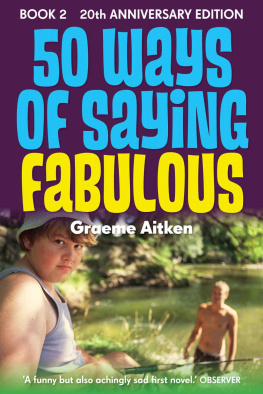
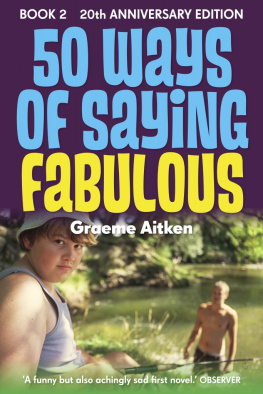

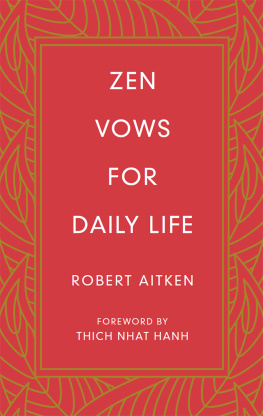
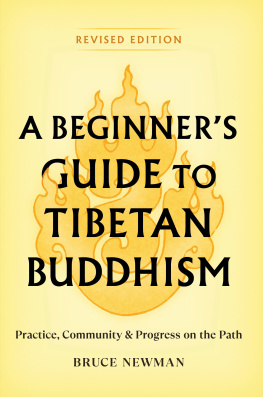
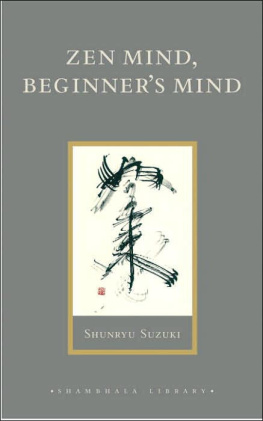

![Ben Aitken [Ben Aitken] - A Chip Shop in PoznaЕ„](/uploads/posts/book/140582/thumbs/ben-aitken-ben-aitken-a-chip-shop-in-poznae.jpg)

